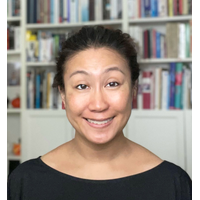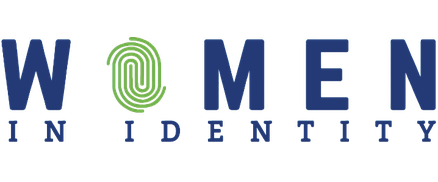
What do you do and what is it about your job that gets you out of bed in the morning?
I’m the Senior Director of IAM Solution Architecture at RBC, and I’m responsible for the architecture and design of workforce and customer IAM enterprise shared services for the bank. I love the breadth of problems and challenges I encounter each day that need to be solved in this role: the need to choose the right combination of technology and process to meet complex requirements, to balance opportunities and risk, and to build the best team to do this. The art of communication also figures prominently as a critical skill in this role—the architecture and design are only useful if you can communicate it effectively to the stakeholders. Each stakeholder has a different viewpoint and building the empathy to understand and respond to their concerns and using this to better communicate how the solution meets their needs, is another aspect that I really enjoy trying to get better at solving.
Because I oversee a team of architects, one of my key objectives is guiding and coaching each team member to become experts in these skills. I find it immensely satisfying to see my team succeed - knowing that some coaching or guidance helped them to be more effective in what they deliver and how they do it. I strongly believe in the value that diversity brings to solving problems, but getting diverse opinions to gel into an effective team requires active facilitation and support. I’ve realized that there are opportunities in every interaction I have to advance diversity, whether it’s making space in discussions to ensure that all voices are considered in a balanced way, or ensuring that all stakeholders have a seat at the table to contribute to a common goal. Seizing these opportunities brings satisfaction to my day.
How did you get to where you are today?
After I graduated from university, I took a job at a US insurance start-up. The owners were very focused on measuring their success and risks, and I learned a lot from them about discerning what can be defined and quantified as success and what can’t be. I think the key skill I learned was how to apply these success measures to my own work, and then to find ways to improve these measures. For example, I focused on the key metric of the rolling 3 month revenue in my first job on a claims processing team and implemented changes to ensure that I, and later on my team, were doing what we could to keep this metric steady or increasing, especially at key reporting times. By doing so, I demonstrated that I could quantifiably excel in my role, and I built some great relationships by collaborating with the teams around me to find new ways to achieve better results. I found that many opportunities to work on new projects and in new roles came through these relationships later.
I also think I benefited from working in different technology roles over the years (BA, PM, developer, support), which allowed me to assess technology problems from a number of different perspectives. I discovered that I enjoy looking at problems from different viewpoints, and from varying levels of abstraction, which led me to pursue roles in technology architecture.
What is the most important lesson you have learned along the way?
Most of us spend a significant portion of our lives working professionally, so it’s important to find roles that you find fulfilling and energizing to improve the overall quality of your life. Solving problems is innately fulfilling, so I’ve focused on figuring out what problems and challenges I’m more naturally drawn to thinking about and solving, and then to find ways to increase the time in my day that I spend on those. If you’re not sure, I suggest to start by taking on a role that sounds interesting to you; while trying to excel in it, you’re gaining experience to help you determine what you like and don’t like that will ultimately help in opening doors to new opportunities and gaining knowledge and acquiring transferable skills that will help you decide on the next step in your career.
What is your pitch to leaders in the identity space? What do you suggest they START / STOP / CONTINUE doing and why?
Identity and Access Management is a complex domain, but I’ve been noticing that identity practitioners can get a bit insular and tend to have a singular focus on identity capabilities to the detriment of the resources that we’re ultimately protecting. While identity capabilities are fundamental for zero trust environments, they are not enough on their own to provide protections against data loss and unauthorized access. For example, it doesn’t matter how complex a password or biometric representation is if this data is transported using deprecated data protection mechanisms, the credential repository is protected by adequate infrastructure security controls, or there are insufficient detection capabilities to identify when the credential repository has been breached. We must continue to take a defense-in-depth approach and ensure that systems are designed and implemented with identity and other security controls to mitigate vulnerabilities and reduce the attack vectors to protected resources and data.
When it comes to diversity in the workplace, I have recently noticed well-intentioned, but arguably misplaced, attempts to balance the historic gender representation inequality in IT roles by providing women-only education and training for IT and security capabilities. I don’t believe women-focused courses and training will be most effective in helping women succeed in the workplace, as this isn’t the environment that exists in reality. I agree wholeheartedly that a more equal representation in IT roles would more accurately reflect the education and skills of the workforce, but I’d much rather see an approach that applies to all genders and focuses on helping people to work better together. This approach should apply to children in school, all the way up through continuing education for adults, and focus on helping people identify in-built biases they may have and overcoming them, and on improving communication with a focus on empathy, clarity and achieving results.
You were a Ski instructor as a side gig during your time as a Tech Consultant at eHealth Ontario. What did you learn from the slopes that you applied at the office?
When I start something, I tend to go full-tilt at it for a while. This happened with skiing: while I loved it immediately, I wasn’t very good at it. I decided to rectify the situation and started taking lessons to get better. With the help of some truly great instructors, I spent a lot of time on the snow and progressed rapidly through the levels. I eventually obtained my CSIA level 2 certification, and pretty much fell into teaching others along the way. I’d say the key skill I practiced during ski instructing was coaching others - figuring out what would best help a skier, giving them exercises, tips and pointers on how to improve their skiing, while trying to keep the lesson progressing in a light and fun way. This translates well to the office since you’ll find yourself in the position to provide feedback to others, whether as a leader or a colleague, and to coach others… and, equally important, to accept feedback graciously and constructively. 😊
In one sentence, why does diversity matter to you?
The more perspectives you have to address a challenge or problem, the more holistic and complete the solution will be.
Where can we find you on social media / the Web?
LinkedIn: Tiffany Yim
